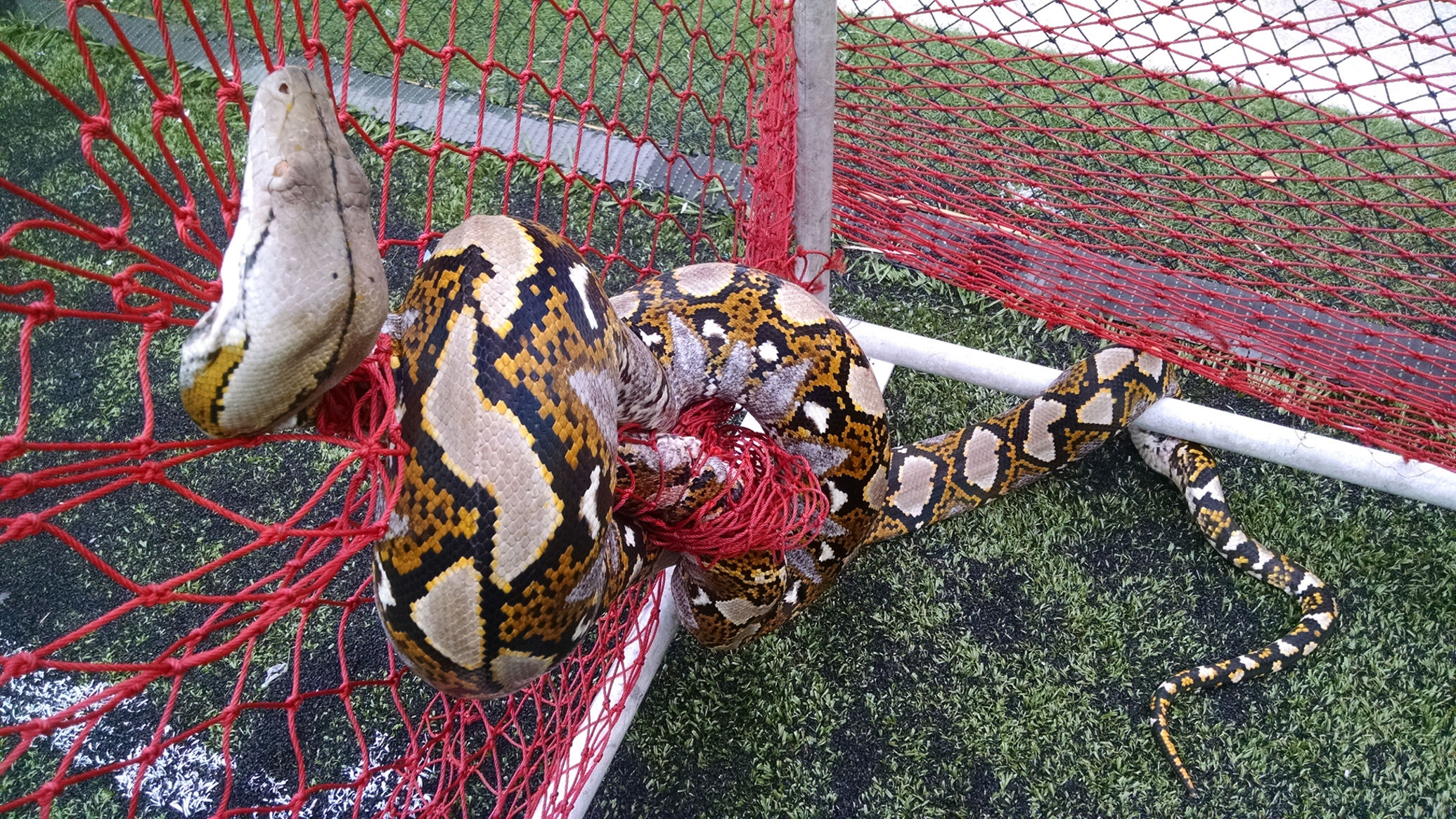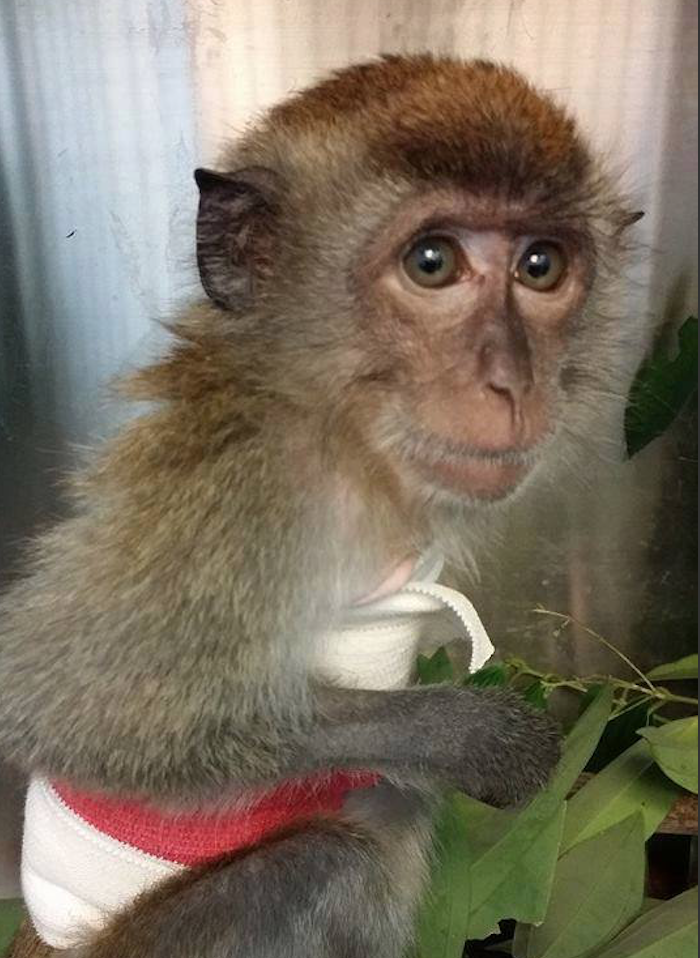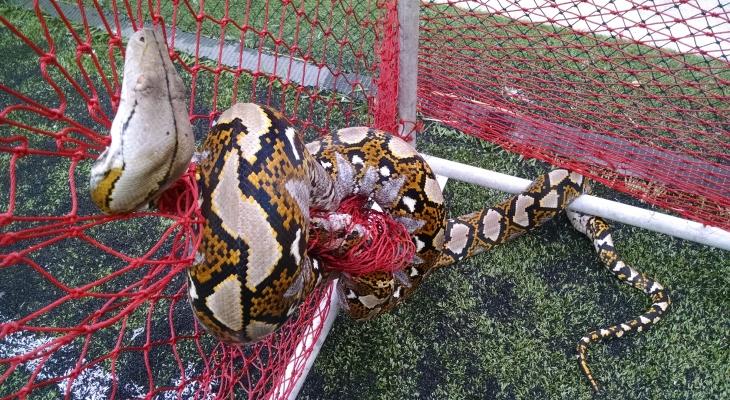Human-Wildlife Conflict in Singapore – What We Can Do
It looked like a crime scene.
In 2013, a family of Singaporeans came home from work to a complete wreck of a living room — potted plants broken, table decoration items strewn across the sofa. It was a suspicious mess. Yes, they called the police, suspecting a burglary.
The police came down swiftly, and spotted the culprit — a snake in panic. Our 24-hour wildlife rescue team attended to the case immediately, rescuing a white-bellied rat snake, a forest species. The snake was 100 per cent panicked, just like the residents. Everyone was happy in the end, as there was no burglary.
But this is an example of human-wildlife conflict in Singapore.
Human-wildlife conflict is the negative interaction between humans and wild animals that result in consequences such as harmful impact to people or the wild animal and/or damage to properties.
While parts of the world may struggle with conflicts involving leopards, elephants and even lions, Singapore is in a unique situation.
Where in the world might you find another country where you could land in one of the world’s busiest airports, and then take a walk in a primary rainforest just 25 minutes away? Or on a lucky day, find sightings of wild otters frolicking in a pond at the Botanical Gardens, and wild crocodiles in the wetland reserve just half an hour away? In a small country like ours, Singapore is a unique package of urbanisation and biodiversity. We get to enjoy the benefits of not only urbanisation and convenient amenities, but also easy reach to greenery around us as we enjoy the serenity. As beneficiaries of such a luxury, we are also responsible to preserve what we have.
Human-wildlife conflict in Singapore happens due to three main reasons: Habitat fragmentation, greening of the city, and a lack of adequate awareness on native wildlife encounters. Let us dive deeper into these three elements, because if well managed and well understood, Singapore can be a role-model for human-wildlife coexistence in urban areas.
Habitat fragmentation: Development Dilemmas
In Singapore, many development projects happen very fast at the same time, and only small pockets of greenery are preserved while majority of older forests are lost in the process.
With multiple construction sites and green patches interspersed with residential areas, the chances of displaced animals moving into urban areas increase manifold. And missing from this process is clear communication to residents living around these development sites, who may come across wild animals during or after the development is completed.

Wouldn’t you be surprised if you woke up to your fence dug up completely by a wild boar, or a kitchen raided by a troop of macaques, or a paradise tree snake desperately trying to camouflage in a potted plant in your flat?
Encountering wildlife: Fear and Fascination
While Singaporeans are mostly used to our urban birds such as crows, sparrows, and even the loud Asian koel (THAT 5am alarm bird), larger mammals and reptiles in urban settings are still a thing of fascination, and even fear.
The fascinated may attempt to feed wild animals to lure them in for a closer look or a picture, while the fearful might call for the destruction of these “dangerous and life-threatening creatures”. Both expressions unfortunately result in negative impact.
Feeding is a curse, stemming from compassion and curiosity, and ultimately ending in a death sentence. These animals become accustomed to people being a source of food, and so approach humans or venture out to the roads looking for handouts, where they may be met instead with fear and aggression, or a vehicle that doesn’t stop

Many people call our hotline saying, “There is a ‘lost’ monkey in the neighbourhood, ‘stealing’ food and being ‘aggressive’. This monkey is ‘dangerous’, please come remove it to a ‘safer place’”.
As an animal advocacy group, we keep science, people’s needs and the welfare of the animals in mind, by asking the right questions.
We break down the behaviour of the monkey, we share tips to minimise conflict situations, we translate myths to facts (such as animal being “defensive”, not “aggressive”) and explain why relocation simply is not the solution to all macaque sightings.
Often resolving such cases involves phone calls, site visits, sadly even receiving some verbal abuse. We empathise with the residents. Our goal is to empower them with the knowledge on how to minimise and mitigate such situations.
Out of sight doesn’t mean ‘problem solved’
Animals pay the price of human actions, often with their lives. Over the years, more than 1,000 long-tailed macaques have been trapped and culled due to complaints from the public.
Relocated animals can cause unrest in a population, affecting the social dynamics of a troop and resulting in splitting up and more conflict situations. Removal and relocation is also very stressful for the individuals who are forced to start over in a new site, in the presence of an unfamiliar troop which can oust the macaque completely. There are so many details that the public may fail to see when they push for removal as a solution.
Every animal and plant in our environment has a role in the ecosystem, and humans are the most dependent species on our planet. The plants and animals will most likely survive (in fact flourish) without us being around; however we cannot survive without them. That makes us responsible too, to ensure harmony.
Is coexistence even possible?
This disconnectivity from nature, if we can call it that, results from most Singaporeans growing up in a highly urbanised city and having limited opportunities to observe and interact responsibly with wildlife, coupled with a lack of emphasis on native wildlife in mainstream education. However, this is slowly changing, thanks to the efforts of several pro-wildlife agencies and organisations.
Through our outreach efforts, ACRES is working with many stakeholders to promote beneficial coexistence with wildlife. To quote Jane Goodall, “Only if we understand, can we care. Only if we care, we will help. Only if we help, we shall be saved.”
This level of understanding towards coexistence does not happen overnight. We still do face resistance, we do hear people pushing for removal and culling of macaques.
But what we never forget is that these voices are from a minority of residents. Site visits and engagements have repeatedly shown that majority of the residents care about our wildlife. They understand. They are willing to practice measures towards coexistence. That gives us a lot of hope, hope for human-wildlife coexistence in Singapore.





